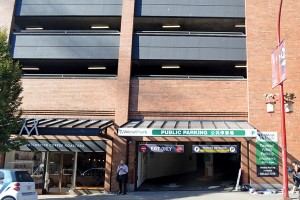By Blake Laufer, Founder, MiStall Insight Inc.
I often hear about parking operations lamenting that they are unique. And they are. Very few industries are simultaneously impacted by their physical layout, special interest groups, pricing limitations, weather conditions, political agendas, and technological advancement – all at the same time.
Subsequently, with so many moving parts it’s difficult for parking operations to measure their success. How is my operation doing? Are we profitable? Are we serving our parkers fairly? Am I succeeding as a manager?
We are not alone. Many other industries have similar challenges to parking, and so instead of examining what makes parking different, we should look at how parking is the same. Furthermore, we can learn from other industries how they measure success, and we can adapt those measures to ourselves.
Supply and Demand: It’s the Law
As you’re probably aware, the Law of Supply and Demand works to balance the amount of supply (product available from manufacturers) with demand (amount of product desired by consumers). When prices are higher consumers buy less and manufacturers produce less; when prices are lower consumers buy more and manufacturers produce more.
The Laws of Supply and Demand can be distorted by various factors. One such distortion occurs in the fixed-supply industry where there supply of product is scarce, like parking. In parking the “manufacturer” is the parking operation, and the parking operation cannot easily change the supply of parking spaces in the short-term. (Over the long-term it’s possible to change your supply – build a new garage, for example, but over the short-term we have roughly the same number of parking spaces available to be sold every day.)
Other fixed-supply industries include airlines (with a fixed number…
By Danielle Desjardins
Illegal parking is a major nuisance in urban environments. It leads to reduced traffic speeds, congestion, changes in travel modes, loss of revenue from valid parking spaces, decline in respect for the law and even to accidents1.
Illegally parked drivers run the risk of having their cars towed or, as it has been happening in private parking lots in some Canadian cities2, being clamped with a ‘Denver Boot’ and having to pay steep fines to recover the use of their car.
Parking psychology
So, what makes a driver decide he or she can park somewhere even though it’s forbidden?
Obviously, convenience and not having to pay must be powerful incentives, but let’s dig a little bit deeper into parking psychology. According to a study on the subject3, a driver’s behaviour is determined by a combination of four factors: attitude, intention, situation and habit.
A driver can have a well thought-out attitude towards a particular parking system, such as parking garages, or a particular parking garage, maybe based on safety preoccupations or location reasons. In some instances, situational factors (the weather, the traffic volume) that may influence a parking choice will intervene. Trip characteristics (destination, number and type of passengers) will also impact the decision-making process. Finally, some decisions are simply based on habits, a process more or less automatic that needs little attention in its execution, depending on the degree to which the decision is thought out, familiarity with the parking location, and convenience.
One of the main factors is likely to be travel goal. Whether our driver is travelling for business or personal reasons, such as an afternoon of shopping, price and proximity will be play a role. For the driver late for an important business meeting, proximity will be of the utmost importance and price, not so much. Conversely, the shopper…
By Chelsea Webster & Richard Simpson, ParkPlus System
Procurement
Many in sales might suggest this should be considered a four letter word. Having experienced two sides of this process, I know it can be a great tool and it can be a disaster, for any group involved. My experience is that everyone involved in the development of an RFP has the best of intentions to provide the best value or benefit to the organization.
Fundamentally issues are often created right from the beginning. Depending on your perception you will measure value or benefit in different ways. How is the organization structured? Does it have supply chain management, strategic sourcing and/or procurement departments? How do these departments integrate with the needs of their internal clients, i.e. other departments? How are they measured and compensated?
Do you get what you pay for? I’m not suggesting you have to pay the most to get the best. If you’re buying a widget or commodity item then price might be the best measurement. However when it comes to services or more intangible purchases it becomes very hard to measure. RFPs that are well designed and thoughtfully put together end up being far more constructive for the organization trying to measure what the market is offering and will likely yield better quality responses for review.
As a salesperson, there have been many RFPs that I haven’t responded to purely because the initial document showed the process would be arduous and painful to go through. Ironically it is often the same for the employees trying to manage the process internally, or it is really easy because they have so few responses to review. Does this bring the best value or benefit to the organization? Alternatively, I think we can all agree that sometimes the RFP process is merely for optics, to…
By Renee Smith
Data breaches are a constant worry for any business that accepts credit card payments. Over the past decade breaches have become increasingly common, and some of the world’s best known companies, including Home Depot, Target, and TJX, have been the targets of sophisticated attacks through which millions of customers have had their personal and credit data compromised. The sad reality of modern life is that any type of personal or financial data that is obtained electronically and transmitted or stored online is potentially at risk.
The parking industry is not immune to this risk. In fact, now that credit card payment is the dominant and preferred form of payment at most parking facilities, parking owners and operators—both public and private—must be particularly vigilant about protecting customers’ financial data.
The credit card industry, through the Payment Card Industry Security Standards Council (PCI SSC), established a framework to help merchants (including parking owners and operators) protect data. The Council has established the Payment Card Industry Data Security Standard (PCI DSS), which is a set of requirements designed to assure that all companies that process, store, or transmit credit card information maintain a secure environment.
On April 28, 2016 PCI SSC released PCI DSS version 3.2, which replaces version 3.1, to address a growing number of threats to customer payment information. This version becomes effective on February 1, 2018. On May 27, 2016, PCI SSC released PA DSS version 3.2, which becomes effective on June 1, 2016. Until their respective effective dates, parking owners and operators should look to these standards as best practices that can help protect their organizations and their patrons.
What do the newest details of PCI DSS v 3.2 adherence entail? Organizations are subject to two significant new requirements. First, they will need to implement a change control process. Second,…
By Ruth Beaman
Technology is transforming parking. New equipment is constantly being introduced: access and revenue control equipment, apps for mobile devices, wayfinding technologies – the list goes on and on. However, as important as technology has come to be, one of the most important aspects of parking management is still stuck in the dark ages. Most owners and operators still haven’t automated their accounting and auditing functions.
In the beginning, parking was a relatively informal and low-tech industry, at least when it came to how it was managed. There’s a common caricature of the early parking operator: cigar in mouth, collecting parking fees and storing them in a cigar box until it was time to go to the bank. As quaint as this image may seem, it’s actually pretty accurate. The problem is, it’s not all that far off today. No, parking operators don’t still keep their money in cigar boxes, at least most don’t. But when it comes to accounting and auditing, most are still living in the past: collecting their receipts, entering parking and revenue data by hand, and hoping reconciliation finds that they’ve ended up with all the money they should. (more…)
Too often, ancillary parking lots are under-appreciated assets, neglected by their owners and managers until a problem arises.
Yet as we’ve learned in an article published in BOMA Magazine, the International Building Owners and Managers Association (BOMA) magazine, poor management decisions – deficient outsourcing contracts, inefficient operations, maintenance issues, employee theft, fraud, financial irregularities and poor use of occupancy statistics – can cause losses of up to 28% of parking revenues1.
This is a sign that managing this essential mobility tool in our cities deserves to be examined more closely.
Parking Lots: woven into the urban fabric
The history of parking lots is of course linked to the history of automobiles. Before they debuted in cities, streets were designed for travel by coach, tram or bicycle, or on foot. Then cars became financially accessible for a growing segment of the population and on-street parking quickly became saturated.
We believe that drivers searching for on-street parking represents about 30%2 of all traffic volume. This is particularly high near sites that generate parking needs such as subway stations, hospitals, shops, schools, educational institutions and workplaces. In a big city, where about 90% of on-street parking is free3 (this drops to 50% for downtown areas), this is one of the reasons why municipal authorities, concerned about the environmental, societal and economic implications of traffic congestion, rely more and more on policies that limit free on-street parking and often depend on the private sector to fill the gap.
Optimum Parking Management: the Art and Practice
Sound management of these infrastructures that are indispensable to city life allows us to optimize their operation and improve their profitability. Beyond the financial benefits, however, parking lots managed with profit in mind as well as efficiency can support the efforts of city authorities concerned with ensuring the quality of life and the environment of…
By Karim Abraham
Automated lighting controls such as occupancy sensors present significant savings potential for parking facilities. However, quantifying potential savings and assessing the financial viability of a lighting automation project can be challenging. The missing link in planning energy savings projects is actual data to build an accurate business case.
Recently, a parkade in Vancouver’s Chinatown neighbourhood underwent an exercise to reduce energy costs and improve building performance. The parkade had been approached a number of times to update their lighting to save costs. Each time, the numbers looked slightly different – and there was no way to tell what the actual return on investment would be. Eventually, the automation project that was implemented would accurately predict savings and reduce the parkade’s costs by installing occupancy sensors in conjunction with real-time data monitoring.
Energy specialists recognized that the parkade lights did not need to be on 24 hours a day, and that the best business case involved adding occupancy sensors to dramatically reduce the amount of time lights were on each day. The problem was that they were still making assumptions on how much of a reduction the occupancy sensors would generate. Busy days could have significantly lower savings than weekends, and at night the traffic would be different again.
Using a systematic approach, data loggers were installed on the lights in the parkade, and pilot occupancy sensors were installed on one floor only. The data that was produced over the coming weeks showed a reduction in consumption by 49.3% as a result of the installation of occupancy sensors. An excellent result.
The data was then pro-rated to factor the varying traffic flow by floor, and savings calculations were adjusted accordingly. For example, lower floors are likely to receive more traffic and therefore achieve lower savings. The pilot occupancy sensors were installed on…
Many parking-related discussions are about parking fees and about costs of (building and maintaining) parking facilities. The importance of parking is widely recognized, but car drivers are reluctant to pay even a small amount of money for parking. But when paid parking is introduced or parking fees are increased, it appears that the price-elasticity of parking demand is low.
In the heated debate about parking you will find on one side the representatives of retail-organizations, proclaiming that every cent spent on parking fees is too much and is chasing customers away. At the other side of the spectrum there will be parking operators declaring that free parking does not exist, and that parking fees are necessary to achieve a profitable business result.
Very few of these discussions are based upon research-supported facts. That is not so strange; quantitative research on this matter is rather scarce, and the results are not generally known.
This article will give some research-funded food for thought on the value of parking.
By Robin Arnfield
Joe Oliver, Canada’s Finance Minister, announced on April 13 that the Code of Conduct for the Credit and Debit Card Industry in Canada, a set of rules designed to protect merchants and cardholders, has been extended to mobile payments. The move will provide regulatory certainty for Canada’s nascent mobile payments market, particularly given the prospect of Apple Pay coming to Canada this year (http://www.mobilepaymentstoday.com/news/apple-pay-poised-to-debut-in-canada/).
“It’s very early days for mobile payments at the point-of-sale in Canada, but the stakeholders such as the banks and telcos are establishing their positions,” says Christie Christelis, president of Canadian consultancy Technology Strategies International. “There’s very little mobile payments adoption in Canada, as NFC-enabled smartphones aren’t available in sufficient quantities yet. Also, consumers lack awareness about NFC payments at the point-of-sale and need to learn how to load their card credentials onto smartphones.”
However, Christelis says Canadian consumers are enthusiastic about using smartphones for purchases. “They’re already doing a lot of remote mobile payments,” he says. “Also, over the last year or two, I’ve been seeing a lot more contactless credit card payments in stores. Many Canadian POS terminals are already NFC-enabled on the back of the country’s EMV migration.”
A bottleneck to Canadian contactless card and mobile payments adoption is the fact that, while many Canadian credit cards contain contactless chips, there are still few contactless debit cards in issue. This is a problem, as Canada is a large debit card market, Christelis says.
Interac, the Canadian domestic debit scheme, only lists 13 FIs, including CIBC, RBC Royal Bank of Canada, Scotiabank and TD, as supporting its Interac Flash contactless application (http://interac.ca/en/interac-flash/flash-filist). In March 2013, RBC carried out the first Canadian mobile payment involving Interac Flash (http://www.mobilepaymentstoday.com/news/interac-and-partners-demo-canadas-first-contactless-mobile-debit-scheme/).
Code of Conduct
The Code was introduced in 2010 to promote merchant choice, fee transparency and disclosure, and fairness…
By Ralph Bond
The recent Ontario provincial election saw the high price of hospital parking for patients and visitors pop up as an issue.
As the population ages and more of us utilize hospital services and the cost of providing parking in rapidly urbanizing areas continues to increase, this hot topic is likely to keep sizzling over the next decade. The issue is more complicated than it first appears.
Historically, the province has funded approximately 75% of hospital capital and operating costs and relied on the local hospital to fund the remainder by generating surplus revenues from services like parking, retail stores, coffee shops and cafeterias. This has lead over time to the standard practice of parking facilities at hospitals being self- financing.
Perhaps the best way to start a conversation about hospital parking is to understand what it costs to provide it. This includes development costs, operating, maintenance and capital repair costs as well as replacement cost over the long term life cycle of the facilities. The cost of construction will vary significantly depending on whether the parking is in surface lot, above ground parking garage or an underground garage or some combination thereof.1 In the Greater Toronto Area (GTA), a surface parking space would likely cost approximately $15,000 per space to build including land costs. An above ground parking garage would likely cost approximately $35,000 per space while underground parking would be about $50,000 per space. The general trend is towards less surface parking and more garage parking as land becomes scarce and hospitals continue to expand into the surface lots. This means the cost of providing parking is likely to increase significantly into the future.
One also has to consider the cost to operate the parking which would include items like hydro for the lighting, parking access and revenue…













